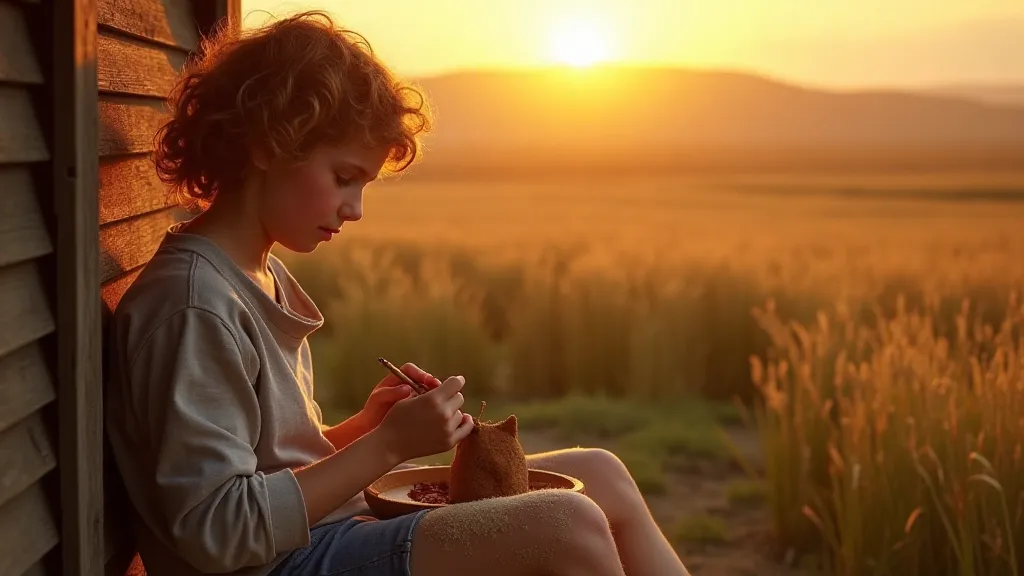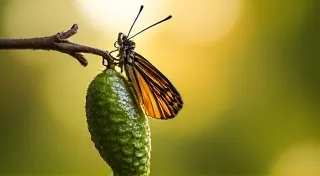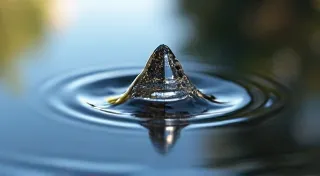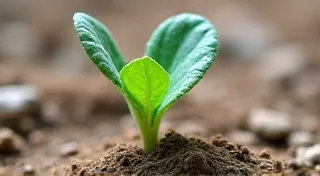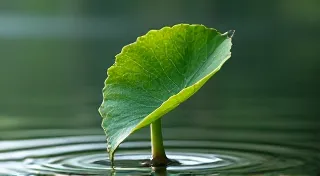The Echo of Grain: Penknives and the Memory of Hands
There’s a quiet dignity in the rasp of steel against wood, a subtle vibration that resonates not just through the material being shaped, but through something deeper – a connection to generations past. Penknife whittling, often dismissed as a simple pastime, is far more than that. It’s a tangible echo of a time when hands were the primary tools of creation, a custodian of skills slowly fading from the modern world. It’s a way to feel the memory of those hands in our own.
My grandfather, a farmer whose life revolved around the rhythms of the seasons, rarely spoke of his past. He was a man of few words, his stories etched more into the lines on his weathered face than any spoken narrative. But I remember him often sitting on the porch, a simple penknife glinting in his hand, transforming scraps of fallen branches into whimsical animals for my cousins and me. These weren’t intricate masterpieces; they were rough, charming, full of character – just like him. They weren’t just toys; they were gifts of time, skill, and unspoken love, each notch and curve a testament to his quiet dedication.
The history of penknife whittling isn’t neatly recorded in textbooks. It’s interwoven with the threads of folk art, rural life, and the practical needs of communities. Prior to the mass production of sophisticated tools, a sturdy knife was the Swiss Army knife of its day – a necessity for survival and a conduit for creativity. Farmers, sailors, and laborers used knives to repair tools, create makeshift toys for children, and whittle small objects that eased the monotony of daily life. The process wasn't merely functional; it was a form of solace, a meditative practice that honed skills and fostered a connection with the natural world. It’s a concept explored more deeply in articles considering carving as a meditative practice, emphasizing the mindful aspect of working with wood.
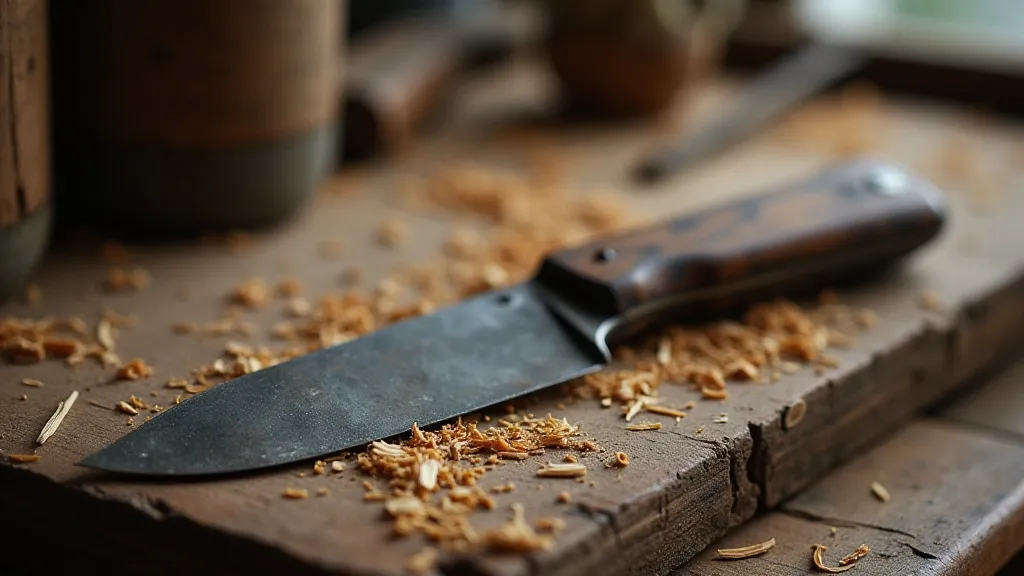
From Utility to Art: The Evolution of a Craft
While early whittling was purely utilitarian, it gradually evolved into a form of folk art. In many European countries, particularly in Scandinavia, Germany, and Eastern Europe, intricate wooden figures and decorations became integral to cultural traditions. These weren't commissioned pieces for the wealthy; they were handcrafted gifts, decorations for homes, and expressions of individual creativity. Think of the whimsical, often anthropomorphic, wooden figures found in traditional Swiss carvings or the delicate wooden animals that adorn many German Christmas markets. These weren't the products of professional sculptors; they were the creations of ordinary people, passing down skills and stories through generations.
The Appalachian region of the United States also boasts a rich tradition of whittling. Isolated communities, often reliant on subsistence farming, fostered a culture where resourcefulness and self-sufficiency were paramount. Whittling became a vital skill, used to create everything from functional objects like spoons and bowls to decorative figures that reflected the region’s unique character. The “folk art” we see from Appalachia – the grinning, often slightly askew, wooden faces – represent a direct lineage to this utilitarian past. They are a visual record of a way of life that's rapidly disappearing.
The Tools of the Trade: More Than Just a Knife
Of course, the penknife itself holds a significant place in this history. The simple folding knife, typically featuring a single blade, evolved over centuries, driven by the demands of its users. Early knives were often made of crude iron, requiring constant sharpening. The development of steel alloys, particularly the introduction of carbon steel, significantly improved the cutting quality and durability. Vintage penknives, especially those made by renowned Sheffield cutlers in England, are now highly sought after by collectors, not just for their craftsmanship, but also for their historical significance.
The feel of an antique penknife in your hand is unlike anything you experience with modern, mass-produced knives. The handle, often made of bone, horn, or wood, develops a patina with age, a tangible record of its use. The blade, though often showing signs of wear, retains a certain sharpness and responsiveness that speaks to the quality of its construction. Examining these old knives – noticing the subtle imperfections, the wear patterns, the marks left by the hands that once held them – is like holding a piece of history in your palm.
Restoring a vintage penknife isn’t about bringing it back to pristine condition. It’s about preserving its character, acknowledging its history. A little oil to protect the blade, a gentle cleaning of the handle – these are acts of reverence, honoring the work of the artisan who originally crafted it. The act of shaping wood, of imbuing it with personal expression, allows for the transference of intent. This intentionality speaks to the very essence of what some consider mapping intent onto untamed wood.
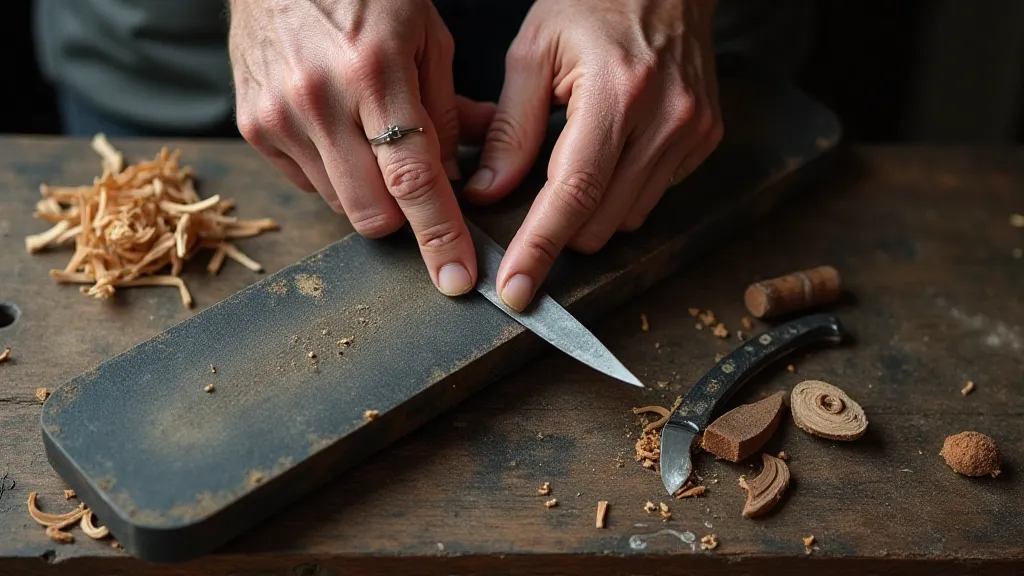
The Fading Dexterity: A Plea for Preservation
Today, in an age dominated by technology and automation, the skills of penknife whittling are slowly fading. The hands that once effortlessly shaped wood are increasingly occupied with keyboards and touchscreens. The ability to manipulate tools, to understand the grain of wood, to intuitively carve a shape from a block of material – these are skills that are not easily acquired without dedicated practice. Beyond simple representation, many explore abstract forms, which is an entirely different skillset demanding a mastery of the material. Those who seek to move past simple figures may find inspiration in exploring abstract forms and penknife techniques.
There’s a certain beauty in the imperfections that come with hand-carved objects. They are a testament to the human touch, a tangible reminder that perfection isn’t always desirable. The slightly uneven edges, the subtle variations in shape – these are what give hand-carved objects their character and charm. The quiet connection fostered between carver and material speaks to a deeper respect for the natural world. Such a connection is integral to the craft, understanding the limitations and possibilities that arise when working alongside nature's bounty.
Preserving the tradition of penknife whittling isn’t just about passing down a skill; it’s about preserving a connection to our past, a link to a way of life that valued resourcefulness, creativity, and the simple pleasures of making something with your own hands. It’s about encouraging a slower pace, a more mindful approach to life. The process requires an almost meditative focus, a willingness to be present with the material and allow it to guide the hand. It's a dialogue that, for many, unveils a deeper appreciation for the subtle rhythms of the natural world. Many find that this practice is more than just a hobby; it's a way to reconnect with something ancient and essential.
Beyond the Carving: A Legacy of Patience and Connection
My grandfather’s carvings may not have been museum-worthy masterpieces, but they held a profound significance. They were a way for him to connect with his children, to share his skills and stories, to leave behind a tangible legacy. He wasn’t teaching us how to carve wood; he was teaching us about patience, perseverance, and the value of creating something with our own hands. He instilled in us a sense of reverence for the craft, a quiet understanding that the true reward wasn't the finished product, but the journey of creation itself.
Perhaps, in a world obsessed with speed and efficiency, we can all benefit from slowing down, picking up a penknife, and rediscovering the simple pleasure of shaping wood. It’s a way to reconnect with our ancestors, to honor their skills, and to leave behind a legacy of our own – one chip of wood at a time. The appreciation for the material itself is paramount; understanding its character, its limitations, its potential. It's a delicate dance between intention and surrender, a willingness to be guided by the grain, the knots, the inherent qualities of the wood. The quiet solitude of the process fosters a deep connection, allowing one to tap into something primal, something essential to the human experience. It’s a way to engage with the world on a deeper level, to appreciate the beauty of imperfection, the wisdom of simplicity.
The beauty of this craft isn't just in the tangible outcome, but in the profound sense of connection it fosters—a connection to the natural world, to our ancestors, and to our own creative potential. The rustling of the leaves, the feel of the wood, the rasp of the blade—these are the elements that weave together to create a tapestry of experience, a moment of presence in a world that often feels chaotic and disconnected. The experience is far more than just the act of carving; it is an immersion into a timeless tradition, a quiet celebration of human ingenuity and resilience.
